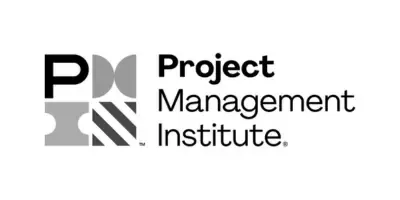Nurturing a Culture of Innovation in Leadership Development
In the dynamic realm of leadership development, fostering a culture of innovation is no longer a choice but a necessity. "Nurturing a Culture of Innovation in Leadership Development" is the mantra for thriving in a world where change is the only constant. In this guide, we'll explore the intricacies of nurturing innovation within leadership development.
The Essence of Innovation
Innovation as a Driving Force
Innovation isn't a luxury; it's the lifeblood of leadership development. It's the engine that powers organizations forward, helping them stay competitive and relevant in a fast-changing world. Leadership development programs must emphasize that innovation isn't optional; it's a fundamental component of modern leadership.
Nurturing a Mindset
Innovation starts with the right mindset. Leaders must create an environment where creativity, curiosity, and forward thinking are encouraged. This mindset shift is the foundation of nurturing innovation.
A Cultural Shift
Fostering innovation is about more than new strategies; it's a cultural transformation that should touch every aspect of leadership development. This shift involves breaking down hierarchies and silos to create an environment where innovation is celebrated, expected, and everyone has the potential to be an innovator.
The Building Blocks of Innovation
Empowering Creativity
Fostering innovation begins by empowering creativity. Leadership development should empower team members to think outside the box, challenge the status quo, and pursue creative solutions.
Embracing Risk
Innovation involves risk. Leaders should create a safe space for calculated risk-taking, where failures are viewed as opportunities for growth. It's these failures that often lead to the most significant innovations.
Encouraging Collaboration
Innovative ideas often come from collaborative efforts. Leadership development programs should promote cross-functional collaboration and idea-sharing. It's about recognizing that innovative solutions can come from unexpected places.
Providing Resources
Innovation requires resources, from time and training to technology and mentorship. Leaders should ensure their teams have what they need to innovate effectively. This means allocating dedicated time for innovation-related activities. It involves providing training and development opportunities for team members to enhance their creative and problem-solving skills.
Leading by Example
Walking the Talk
Leaders must model innovative behaviour. When team members see their leaders actively engaged in creative problem-solving, they're more likely to follow suit. Leading by example means demonstrating a commitment to innovation in practical ways. This could involve initiating or participating in brainstorming sessions, pilot projects, or creative workshops. It's about showing that innovation is not just a theory but a practice that leaders actively endorse.
Celebrating Innovation
Recognition and celebration play a pivotal role in fostering a culture of innovation. Leaders should actively celebrate innovative achievements within their teams and organizations. This recognition can take various forms, from verbal praise to awards and incentives. Leadership development programs teach leaders how to recognize and celebrate innovation effectively. It's not just about acknowledging big, groundbreaking innovations; even small, incremental changes should be celebrated. Small wins can often lead to more significant breakthroughs.
Setting Innovation Goals
Leaders can further foster innovation by setting clear innovation goals. These goals provide direction and purpose for innovative efforts. They help teams understand what the organization aims to achieve through innovation. Leadership development programs equip leaders with the skills to set and communicate innovation goals effectively. This involves not only defining the goals but also creating a plan to achieve them. It's about breaking down the larger innovation objective into smaller, manageable steps.
Nurturing Innovation in Leadership Development: Success Stories
Case Study 1: Google's "20% Time"
Google's "20% Time" initiative allowed employees to spend 20% of their workweek on personal projects, leading to innovations like Gmail and Google News.
Case Study 2: Apple's Design Thinking
Apple's commitment to design thinking led to groundbreaking products that revolutionized the tech industry.
Case Study 3: Amazon's Customer-Centric Innovation
Amazon's focus on customer needs and innovation has made it a global e-commerce giant.
Conclusion
Nurturing a culture of innovation in leadership development is not just a choice; it's an essential path to success. It empowers creativity, embraces risk, encourages collaboration, provides resources, and sets the stage for leaders to lead by example. By celebrating innovation and setting clear innovation goals, leaders foster a culture where creativity and innovation are the norm. In today's rapidly changing world, innovation is not an option; it's the driving force that keeps organizations relevant and ahead of the curve.
Interested in a free Leadership Skills Workshop with your team?
- Address instantly fixable issues that impact customer perceptions and employee morale.
- Learn and practice a habit that will raise employee performance.
- Set actions with specific and measurable steps that they'll gladly be accountable to achieve.











